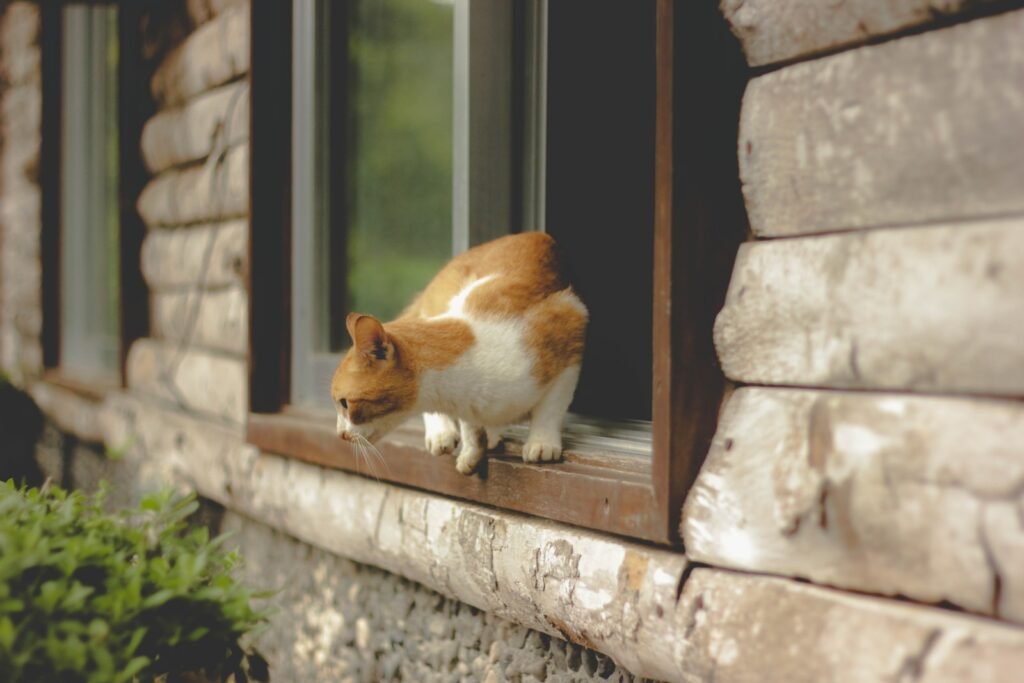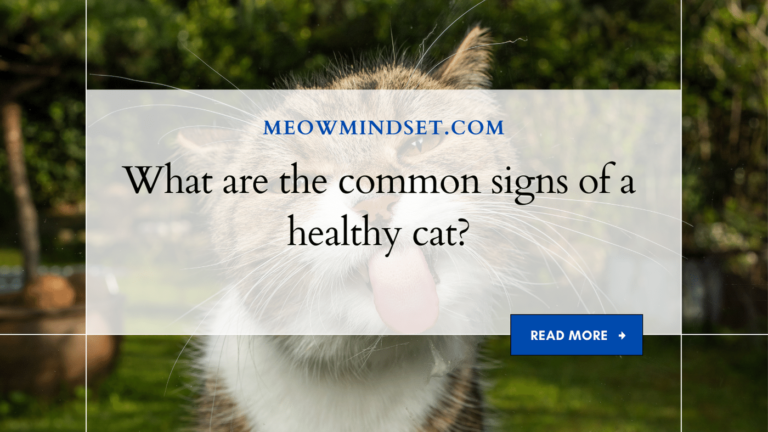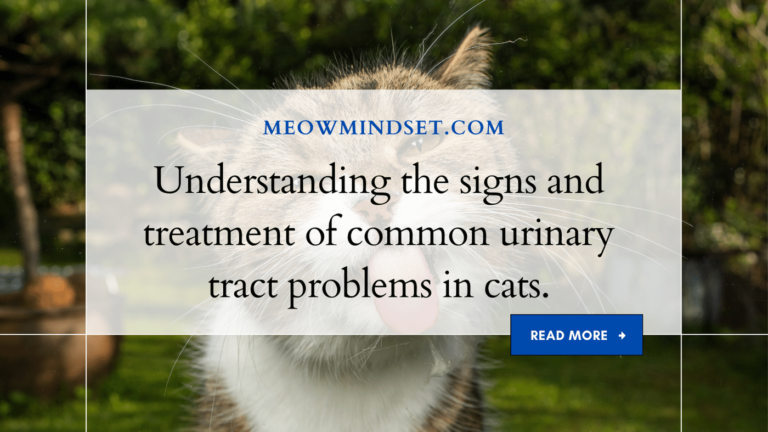Respiratory problems in cats.
When it comes to respiratory problems in cats, there are some telltale signs that every cat owner should be aware of. From coughing and sneezing to breathing difficulties and wheeziness, respiratory issues can affect cats of all ages and breeds.
In this blog post, we’ll explore the most common types of respiratory problems seen in felines, as well as their causes and treatment options. So whether you’re a seasoned cat owner or a new adopter, read on to learn how you can keep your furry friend healthy and happy!
Introduction

Cats have a wide range of respiratory problems, from simple congestion to more serious conditions such as asthma. Even healthy cats can develop problems if their environment is humid and they are exposed to smoke or other pollutants.
Common respiratory problems in cats include:
1] Common congestion including phlegm production and difficulty breathing through the nose and mouth.
2] Asthma, which is a long-term condition that affects the lungs and causes difficulty breathing.
3] Respiratory infection, including colds and upper respiratory signs (such as fever).
4] Bronchitis, an Inflammation of the Bronchi – tubes that take air from the lungs to the heart. Bronchitis can be caused by a number of factors, including exposure to cigarette smoke, dust mites, or other allergens in the home environment.
What are the most common respiratory problems in cats?
Cats are often considered to be one of the “more healthy” pet species, but that doesn’t mean they don’t have any common respiratory problems.
Some of the most common respiratory problems in cats include:
1) Upper respiratory infection (URI): Symptoms typically include coughing, sneezing, and nasal discharge. Most URIs can be treated with antibiotics, but if it’s a severe case or if there is underlying health problem causing the URI, then treatment may also involve glucocorticoids.
2) Coughing and dyspnea: These symptoms are often indicative of a more serious condition such as asthma or bronchitis. If left untreated, coughing and dyspnea can lead to chest infection and even death in cats.
3) Allergic rhinitis: This is an allergic response to environmental factors such as dust mites or grasses. Affected cats usually have sneezing, itchy skin, and a watery nose.
4) Pneumonia: A pneumonia infection is an extremely serious condition that can rapidly lead to death in cats. Many factors can contribute to a cat getting pneumonia including virus exposure, bacterial infection, unhealthy bacteria growth in the airways (Aerococcus), and smoke inhalation.
5) Bronchitis: Bronchitis is an infections of the bronchi which accounts for around 25% of all hospital admissions in dogs and 38% of all hospital admissions in cats annually [1]. The most common cause is Bordetella bronchiseptica, but other respiratory viruses can also cause bronchitis. Bronchitis is treated with antibiotics and often requires hospitalization.
How can you identify the signs of a respiratory problem in your cat?
When it comes to respiratory problems in cats, it’s important to be able to identify the signs and take steps to address them.
Here are some of the most common signs of a respiratory issue in a cat:
- Coughing or sneezing
- Chewing or licking at the mouth
- excessive barking or loud meowing
- A poor appetite or diarrhea
- Rapid breathing or panting
What can you do if you think your cat has a respiratory problem?

If you think your cat may have a respiratory problem, there are a few things you can do to check and determine the severity of the issue. This includes taking your cat to a veterinarian for an exam and testing, as well as providing treatment if needed.
Some common signs of respiratory problems in cats include: coughing, sneezing, lack of appetite, lethargy, fever, decreased breathing rate or energy, and change in vocalization. If any of these signs are present, it is important to take your cat to a veterinarian for an exam and testing to determine the extent of the problem and whether or not it requires treatment.
One common type of respiratory problem in cats is URI (unintentional exposure). URI is when bacteria from the environment gets into the cat’s lungs and causes severe inflammation. This can lead to pneumonia (a serious lung infection), which may require antibiotics or even surgery to treat. Treatment for URI usually involves antibiotics and sheltering your cat from environmental pathogens until the infection has cleared up.
The most common cause of death in cats is from chronic (long-term) illnesses such as diabetes mellitus or heart disease. If you notice any changes in your cat’s behavior or health that make you concerned about their long-term wellbeing, be sure to bring them in for an examination with a veterinarian.
What are the treatment options for common respiratory problems in cats?
There are a number of treatment options available for common respiratory problems in cats, depending on the underlying cause. Treatment may include medications, breathing exercises, and surgery. Some of the most common causes of respiratory problems in cats include bronchitis, pneumonia, and asthma.
Bronchitis is an inflammation of the airways that leads to difficulties breathing. The most common signs of bronchitis in cats include coughing, difficulty breathing, persistent wheezing, and rapid breathing. Cats with bronchitis often have a high fever and poor appetite.
Bronchitis can be caused by a variety of factors, including exposure to smoke or pollutants, viruses such as parvovirus B19, bacteria such as Streptococcus pyogenes (the causative agent of Strep throat), or infection with other cat diseases.
Pneumonia is an inflammation of the lungs that can lead to overcrowding in the lungs and increased breathlessness. The most common signs of pneumonia in cats include high fever, shortness of breath (dyspnea), rapid breathing (tachypnea), coughing up mucus, problems urinating (incontinence), and decreased appetite.
Pneumonia can be caused by a variety of factors, including inhaling dust particles or other toxins, exposure to virus infections such as Feline Leukemia Virus (FeLV), bacteria such as Mycoplasma pneumoniae or Staphylococcus aureus infections , respiratory syncytial
Causes of Respiratory Problems in Cats
Cats are obligate carnivores and as such, are commonly affected by certain respiratory problems that relate to their diet and lifestyle. These problems can be exacerbated by environmental conditions such as house dust mites, smoke, and fumes from chemicals or fuel burning appliances.
Some of the most common respiratory problems in cats include:
1) Sleep apnea -itance to breathe during sleep is a common problem in cats and is caused by obstructions in the breathing passages during sleep. This can lead to major health implications including weight gain, increase in heart rate, and deterioration of kidney function. Snoring may also be an indication of sleep apnea. Cats treated for sleep apnea may require devices to help them breathe at night (e.g., CPAP machines).
2) Upper respiratory tract infections – Otitis media (a middle ear infection), pneumonia (a lung infection), bronchitis (affecting the air sacs in the lungs), and actinomycosis (an infection of the muscle tissues near the bones) are all common problems in cats. Treatment typically involves antibiotics along with supplemental oxygen or IV fluids if needed. In severe cases where there is extensive damage to the lungs, a cat may need to be hospitalized for treatment.
3) Allergies – A variety of environmental factors can cause allergic reactions in cats including food, pollen, feathers, dander, medications, etc. Symptoms can range from mild skin rashes to life-threatening anaphylactic shock. It is important to identify the cause of the allergy and address it using a holistic approach. In some cases, corticosteroids may be necessary to treat the underlying condition along with medication for the allergy.
4) Fleas – Cats are host to several types of fleas including the cat flea (Dermacentor variabilis), the dog flea (Ctenocephalides canis), and the human flea (Pulex irritans). Fleas can spread infections such as Bartonella vulganitis and rabies, as well as tapeworms. Treatment involves combing the cat thoroughly, treating any underlying infection, and applying a topical flea treatment such as imidacloprid/moxidectin or selamectin/Benadryl.
Conclusion
Cats are obligate carnivores and as such have evolved over time to efficiently process and digest meat. In fact, many of the respiratory problems common in cats are actually due to food allergies. If your cat has a fever, congestion and difficulty breathing, it is important to consult with a veterinarian to rule out any underlying conditions that could be causing those symptoms.
Sometimes the most effective treatment for respiratory problems can be dietary adjustments, including special diets or supplements suited for cats with specific food allergies. Be sure to ask your veterinarian about these options if you suspect your cat has a food allergy!






